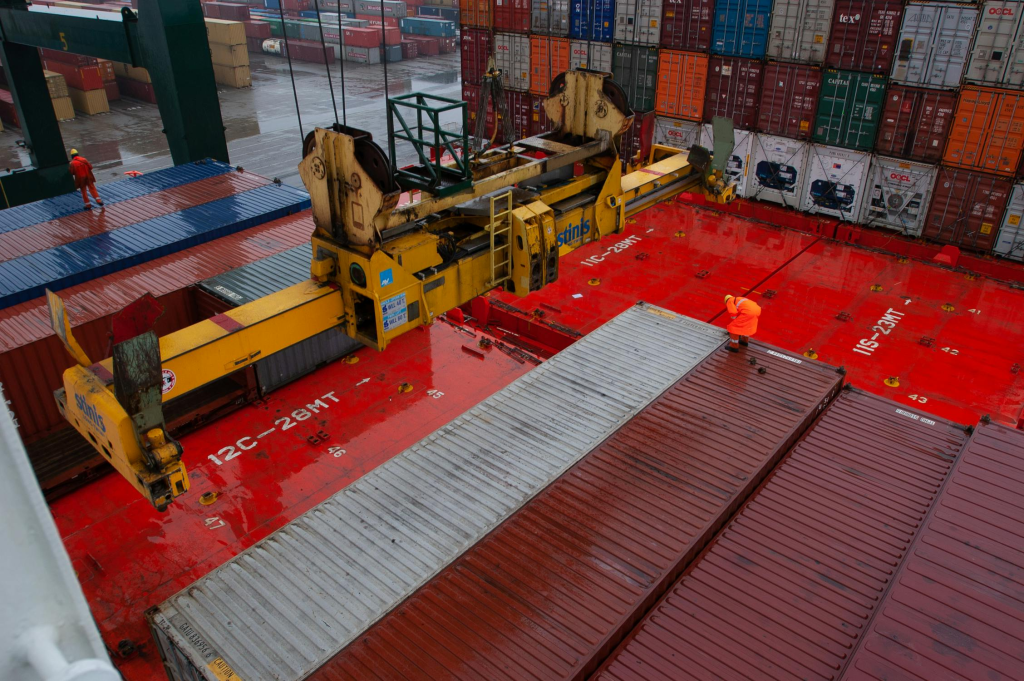Retail transport in Australia is a vital component of the supply chain, ensuring products reach consumers quickly and efficiently. For businesses involved in retail, the challenge is not only about ensuring timely deliveries but also maintaining cost-efficiency and meeting the unique logistical needs of a vast and diverse country.

This article will explore the critical aspects of retail transport, how it affects Australian businesses, and what strategies companies can adopt to optimise their operations.
Click Browse This Site For More Details
Understanding Retail Transport In Australia
Retail transport refers to the movement of goods from distribution centres, warehouses, or suppliers to retail locations or directly to consumers. With Australia being a large country, businesses face unique transportation challenges. The logistics of retail transport include road, rail, air, and even sea freight, each with its own advantages and limitations.
The Australian retail transport landscape is influenced by geography, population density, urban versus rural distribution, and seasonal demand fluctuations. Retailers must carefully choose the right transportation modes to balance cost, speed, and reliability. As online shopping continues to grow, the importance of efficient and reliable retail transport has never been more significant.
Key Challenges In Retail Transport
Geographic And Infrastructure Challenges
Australia is known for its vast distances and relatively low population density in many regions. The retail transport sector faces the challenge of moving goods efficiently across long distances while dealing with the infrastructure limitations of rural and remote areas
For businesses operating in urban areas like Sydney, Melbourne, and Brisbane, transport may be more straightforward due to the presence of developed road networks and proximity to ports and airports. However, for companies that serve regional and remote areas, the complexity of delivery increases. Routes may not always be well-maintained, and transportation times can vary widely depending on weather conditions or road closures.
Rising Fuel Prices And Environmental Concerns
Fuel costs have a significant impact on the cost of retail transport in Australia. With fluctuations in global oil prices, businesses need to find ways to manage and reduce fuel expenses. Retailers must adopt strategies such as optimising delivery routes and vehicle maintenance schedules to limit fuel consumption.
Additionally, growing environmental concerns and sustainability initiatives are leading to greater scrutiny of the carbon footprint associated with transport. Companies in the retail sector are increasingly under pressure to reduce emissions and find greener transport solutions. Electric vehicles, hybrid trucks, and alternative fuel options are becoming more common, but these solutions often require considerable upfront investment.
Labour Shortages And Skill Gaps
A shortage of skilled drivers and logistics professionals is a critical challenge for the Australian retail transport sector. The demand for qualified drivers, warehouse staff, and logistics managers is rising, and many companies struggle to fill positions.
This talent shortage is compounded by competition from other industries, which are also looking for skilled workers.
To combat this, some businesses are investing in training programs for new workers and offering competitive wages and benefits to attract and retain talent. However, the issue remains a key barrier to effective retail transport operations.
Delivery Expectations Of Consumers
As e-commerce grows, Australian consumers are demanding faster, more convenient delivery options. Same-day and next-day delivery services are becoming the norm in many industries, pushing retailers and logistics providers to innovate. Meeting these expectations without driving up costs is a significant challenge, especially for businesses that don’t have the infrastructure of larger national retailers.
To meet the growing demand for quick deliveries, many businesses are leveraging technology and data analytics to optimise their logistics networks. This might include advanced routing algorithms that ensure deliveries are made quickly while minimising costs.
The Role Of Technology In Retail Transport
Technology plays a significant role in modernising retail transport. As businesses face growing pressure to meet consumer demands for fast, affordable, and sustainable deliveries, innovative technological solutions are becoming increasingly important.
Route Optimisation Software
For retailers, optimising delivery routes is crucial for ensuring timely and cost-effective transportation. Route optimisation software uses data to identify the most efficient paths for deliveries. By analysing factors such as traffic, road conditions, and delivery windows, these tools help retailers reduce fuel consumption, improve delivery times, and avoid delays.
Real-Time Tracking And Monitoring
With the growing demand for transparency in delivery services, many retailers now offer customers real-time tracking. This not only enhances the consumer experience but also provides businesses with valuable insights into their transport operations. GPS tracking systems and IoT-enabled devices allow retailers to monitor their fleets, track shipments and even anticipate delays before they become a problem.
Automation And Robotics
Warehouse automation is another area where technology is making a significant impact. Automated systems such as drones and robotics are increasingly being used to pick, pack, and sort goods in warehouses, streamlining the entire retail transport process. Automation reduces human error, increases efficiency, and speeds up the time it takes for goods to leave the warehouse and reach consumers.
Electric And Autonomous Vehicles
The rise of electric vehicles (EVs) is helping to reduce the environmental impact of retail transport. EVs are becoming more viable for freight operations, especially in urban areas, where their lower emissions can help retailers meet sustainability goals. Additionally, autonomous vehicles could revolutionise the transport sector, reducing the reliance on human drivers and potentially lowering operational costs over time.
Best Practices For Optimising Retail Transport
To remain competitive in a rapidly changing retail environment, businesses must adopt strategies that optimise their transport operations. Here are some best practices that can help streamline retail transport in Australia.
Partnering With Experienced Logistics Providers
Working with experienced third-party logistics providers (3PLs) is an effective way for retailers to improve transport efficiency. These providers have established networks, expertise, and resources to handle complex logistics needs. They can offer tailored solutions based on the size of the business and its specific transportation requirements, helping retailers reduce costs and improve delivery times.
Fostering Collaboration Across The Supply Chain
Effective communication and collaboration between retailers, suppliers, and transport providers are essential for smooth retail transport operations. When all parties are aligned, retailers can better plan inventory, reduce lead times, and avoid stockouts or overstocking. Retailers should aim to create strong relationships with their supply chain partners to ensure reliability and efficiency.
Embracing Sustainability
Sustainability is no longer just a buzzword—it is a core business requirement. Retailers that prioritise green logistics solutions, such as using eco-friendly vehicles or implementing energy-efficient warehouse systems, will not only reduce their environmental footprint but also appeal to increasingly eco-conscious consumers. Many companies are also adopting circular supply chain models that focus on reusing materials and reducing waste.
Investing In Customer Experience
Retail transport is integral to the customer experience, especially in e-commerce. Fast and reliable delivery services are crucial for customer satisfaction and loyalty. Retailers should invest in user-friendly online platforms that allow customers to track their orders and select convenient delivery options. Providing clear communication and timely updates throughout the delivery process will help foster trust with consumers.
Keeping Abreast Of Regulatory Changes
The retail transport sector in Australia is governed by various regulations related to road safety, emissions standards, and transport licensing. Retailers must stay informed about any changes to these regulations to avoid costly penalties and ensure their operations remain compliant. Working with logistics experts who understand these regulations can help businesses navigate the legal landscape and stay ahead of potential challenges.
The Future Of Retail Transport In Australia
Looking ahead, retail transport in Australia will continue to evolve in response to changes in consumer expectations, technological advancements, and environmental concerns. Businesses will need to stay adaptable, leveraging new technologies and best practices to remain competitive. In particular, e-commerce growth will push for more agile, cost-effective, and sustainable transport solutions.
By investing in innovation, collaboration, and sustainability, Australian retailers can build robust retail transport systems that serve both their operational needs and their customers’ expectations.
Conclusion
In conclusion, retail transport plays a pivotal role in the success of Australian businesses by ensuring that goods reach consumers in a timely, cost-effective, and reliable manner. While challenges such as geographic constraints, rising fuel costs, labour shortages, and growing consumer expectations continue to impact the sector, the integration of technology, sustainability initiatives, and strategic partnerships can help mitigate these issues.
By embracing innovations like route optimisation software, real-time tracking, and electric vehicles, businesses can enhance their transport operations and improve customer satisfaction. Furthermore, staying abreast of regulatory changes and investing in skilled labour will be key to maintaining smooth and efficient retail transport systems. Ultimately, businesses that prioritise these strategies and adapt to the evolving landscape will be better positioned to thrive in an increasingly competitive market.
Frequently Ask Question
What Is Retail Transport And How Does It Work?
Retail transport refers to the movement of goods from distribution centres to retail outlets or directly to customers. It involves coordination between manufacturers, wholesalers, and retailers to ensure that products are delivered on time and in good condition. It may include a combination of road, rail, or sea transport, depending on the product type and destination. In Australia, retail transport often involves third-party logistics providers who handle the delivery process for businesses. This service is essential to keeping retail operations running smoothly and maintaining stock levels.
What Are The Benefits Of Using A Professional Retail Transport Service?
Using a professional retail transport service ensures reliability, efficiency, and cost-effectiveness. These services have the expertise and resources to handle logistics, track shipments, and ensure timely deliveries. They also manage the complexities of transportation, including compliance with Australian transport regulations. Additionally, third-party providers often have access to technology that can optimise routes, reducing fuel costs and delivery times. Overall, partnering with a retail transport provider can lead to better customer satisfaction and streamlined operations.
What Types Of Vehicles Are Used In Retail Transport?
Retail transport can involve various types of vehicles depending on the nature of the products being delivered and the distance of the journey. Common vehicles include small vans for local deliveries, refrigerated trucks for perishable goods, and large semi-trailers for bulk shipments. Some services also use specialised vehicles for fragile or oversized items. The choice of vehicle depends on the size, weight, and delivery requirements of the products being transported.
